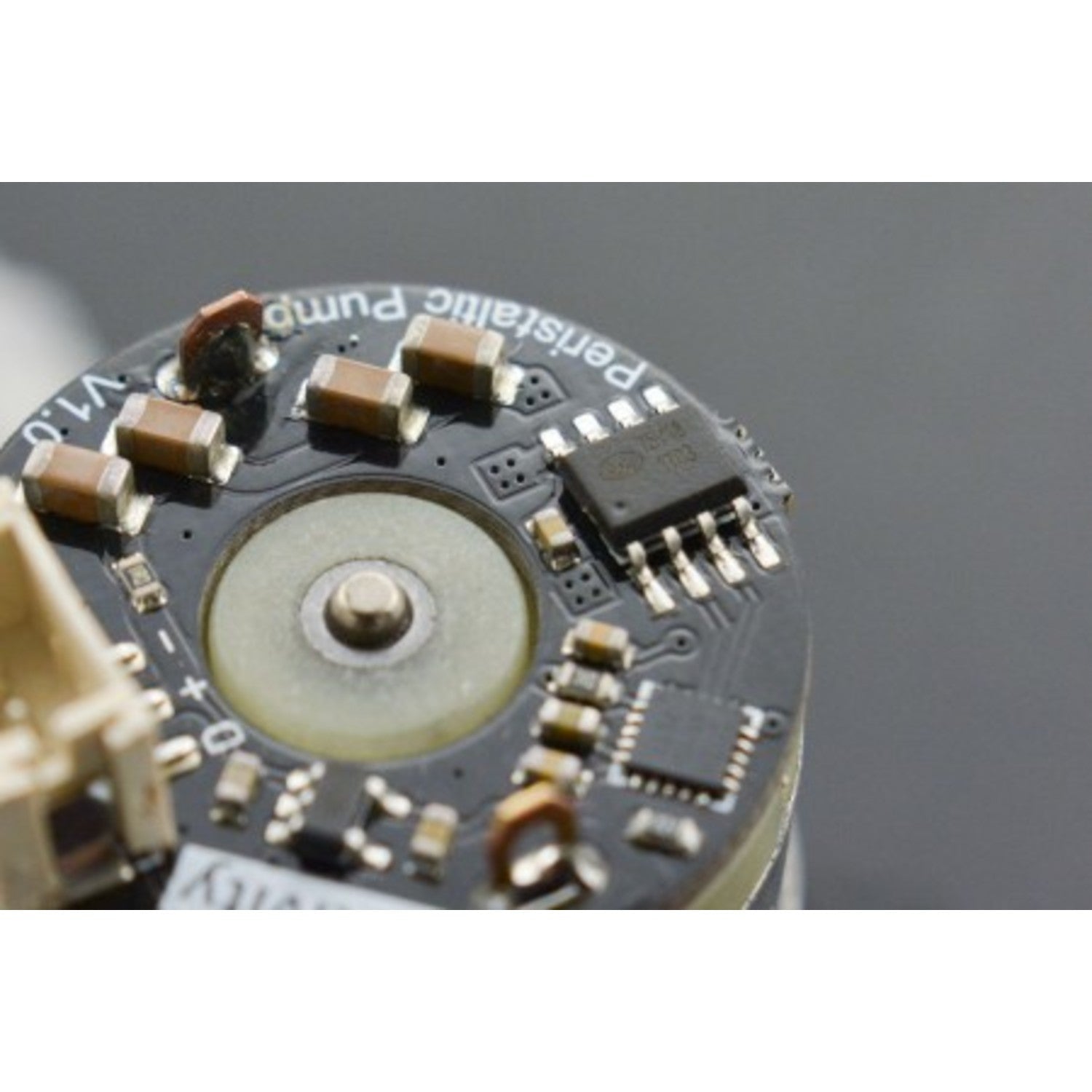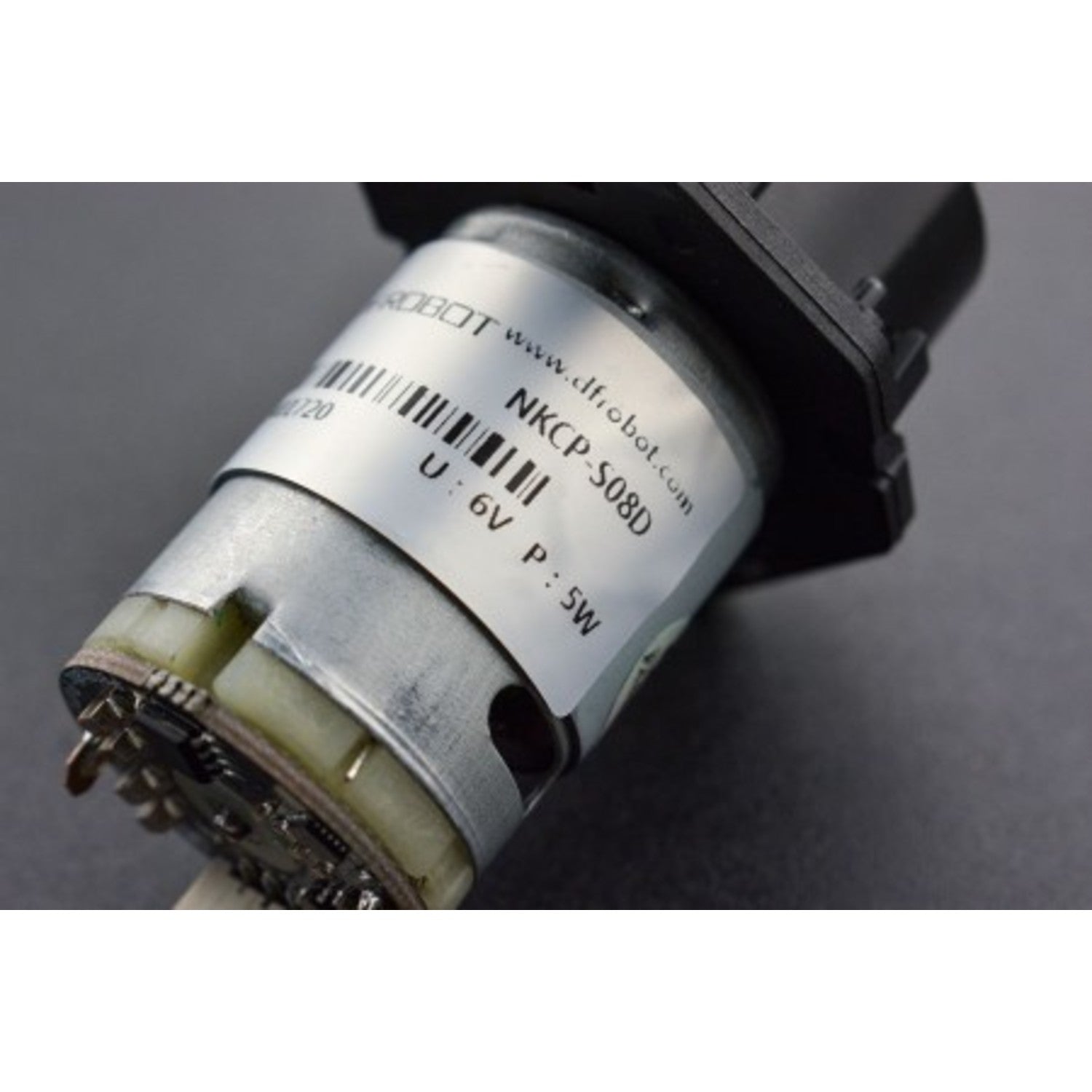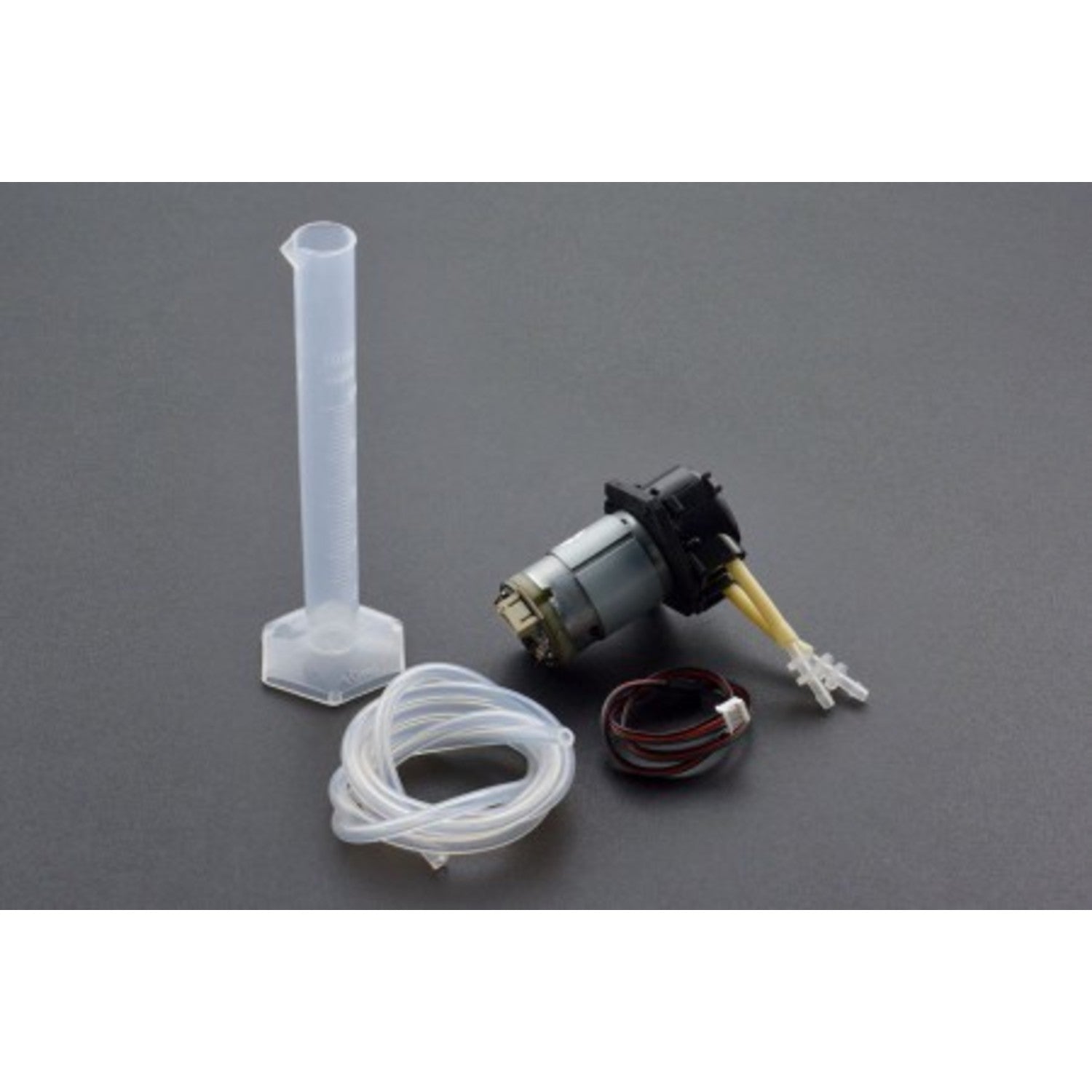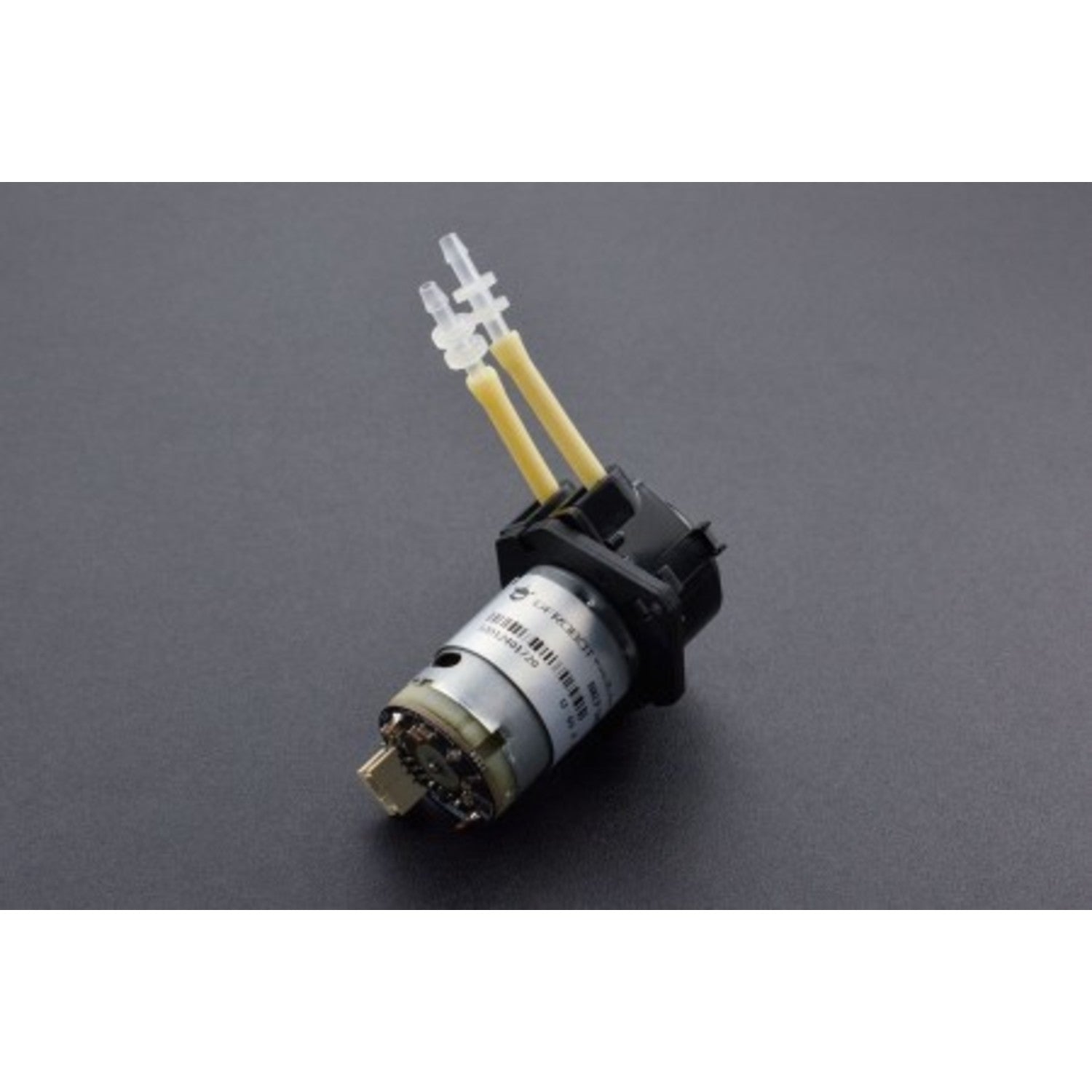The Gravity digital peristaltic pump is a cutting - edge product from DFRobot, a new addition to our water quality monitoring device lineup. It serves as an excellent actuator for liquid systems. This peristaltic pump has a built - in PPM motor driver with a Gravity interface (PH2.0 - 3P). The control signal is compatible with standard servo motors, allowing easy control of direction and flow speed using Arduino, Raspberry Pi, micro:bit and other microcontrollers. The pump head tube is made of BPT material, which is acid - resistant and long - lasting. Peristaltic pumps are positive displacement pumps ideal for small - volume fluid delivery. The fluid is held in a flexible tube inside a circular casing. As the rotor spins, the fluid is squeezed and moved, enabling precise control of the liquid flow rate. As a metering pump, it's perfect for quantitative delivery and has a vast range of applications. You can use it in science experiments, hydroponics, drip irrigation, tropical fish farming, and shrimp cylinder environment control. It can automate numerous titration experiments like potentiometric titration, indicator - based colorimetric titration, and pH - based titration, greatly boosting your work efficiency. Moreover, it's widely used in the food and medical industries, for example, in making an automatic coffee machine. Since the motor consumes about 5W of power and the USB port can only supply 2.5W, it's advisable to add an external power supply to your microcontroller. Features of the peristaltic pump include low noise, low cost, simple structure, easy maintenance, three rotors with moderate pulsation, and being non - toxic and pollution - free. The driver board has a Gravity 3Pin digital connector for plug - and - play, and uses a servo PPM control signal, making it easy to drive and compatible with various controllers. Specifications of the driver board: Input Voltage: 5V - 6V; Maximum Continuous Operating Current: 1.8A; Peak Current: 2.5A; Quiescent Current: <1mA (No PPM Signal Input); PPM Signal Resolution: 1us; Positive Pulse Width of the PPM Signal: 500us - 2500us; Forward Pulse Width Range: 500us - 1400us (500us: max forward speed); Stop Pulse Width Range: 1400us - 1600us; Inverted Pulse Width Range: 1600us - 2500us (2500us: max inverted speed); PPM Frequency: 50Hz (Servo Control Signal); Connector: Gravity PH2.0 - 3P; Size: 27.4 x 28.7 mm/1.08 x 1.13 inches. Specifications of the peristaltic pump: Motor: DC Motor; Rated Voltage: 6V; Rated Power: 5W; Tube Material: BPT; Tube Specifications: inner diameter 2.5mm, outer diameter 4.5mm; Pump Head Material: Engineering Plastics; Pulsation: Three Rollers, Small Pulsation; Flow: ≥45ml/min (almost 1ml/s); Working Conditions: ambient temperature 0 ~ 40 ℃, relative humidity <80%. There are also product wiki and more documents available.




Using the Gravity digital peristaltic pump is quite straightforward. First, connect the pump to your microcontroller like Arduino, Raspberry Pi or micro:bit using the Gravity 3Pin digital connector. Since the motor power consumption is about 5W and the USB port can only supply 2.5W, make sure to add an external power supply to your microcontroller. You can then use the control signal which is compatible with standard servo motors to adjust the direction and flow speed of the pump. For titration experiments or other applications, just place the tube in the appropriate liquid and start the pump. As for maintenance, the pump has a simple structure, so it's easy to take care of. Check the tube regularly as it's made of BPT material. If it shows signs of wear or damage, replace it. Keep the pump in an environment with an ambient temperature between 0 and 40 ℃ and relative humidity less than 80%. This will ensure the pump runs smoothly and has a long lifespan.